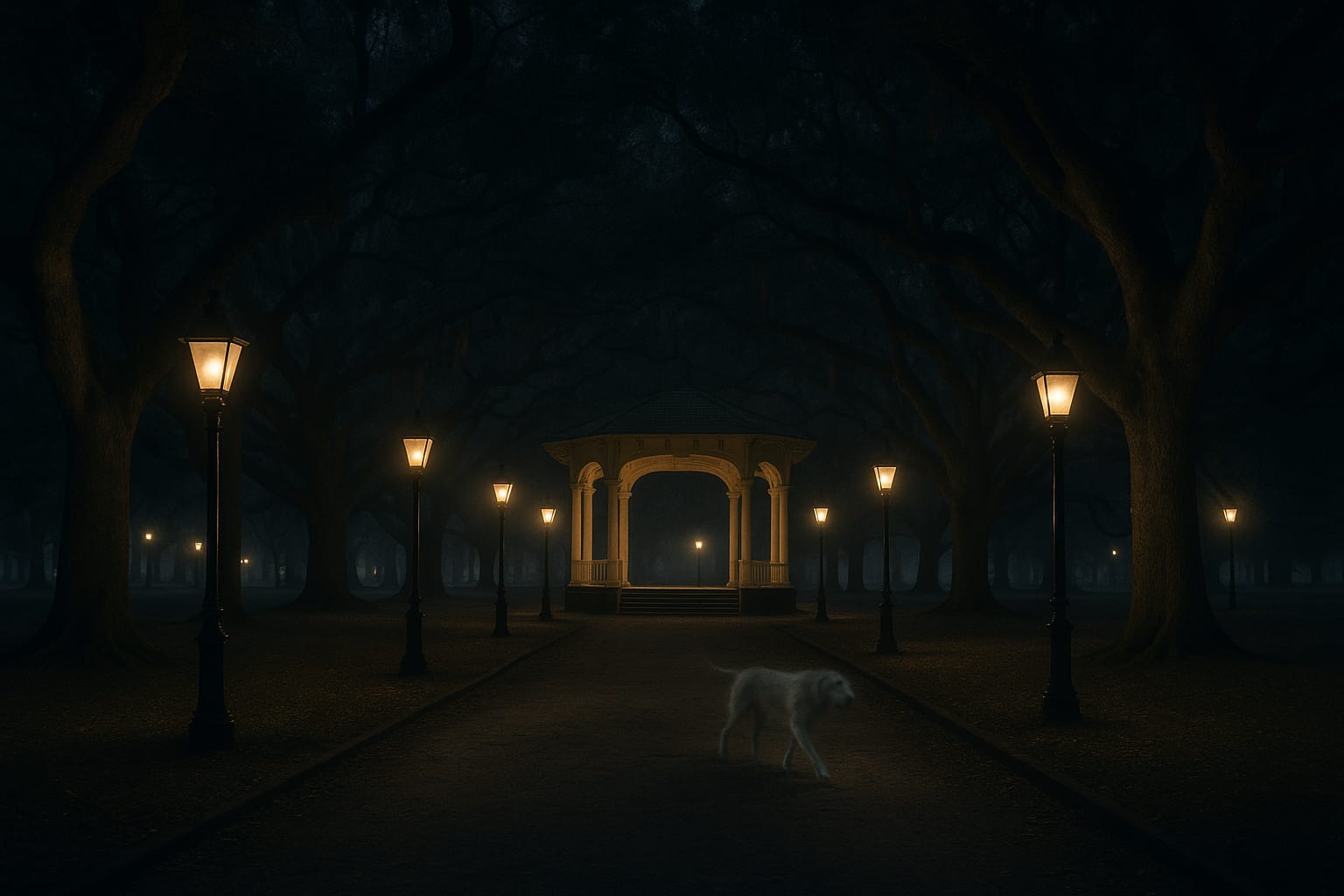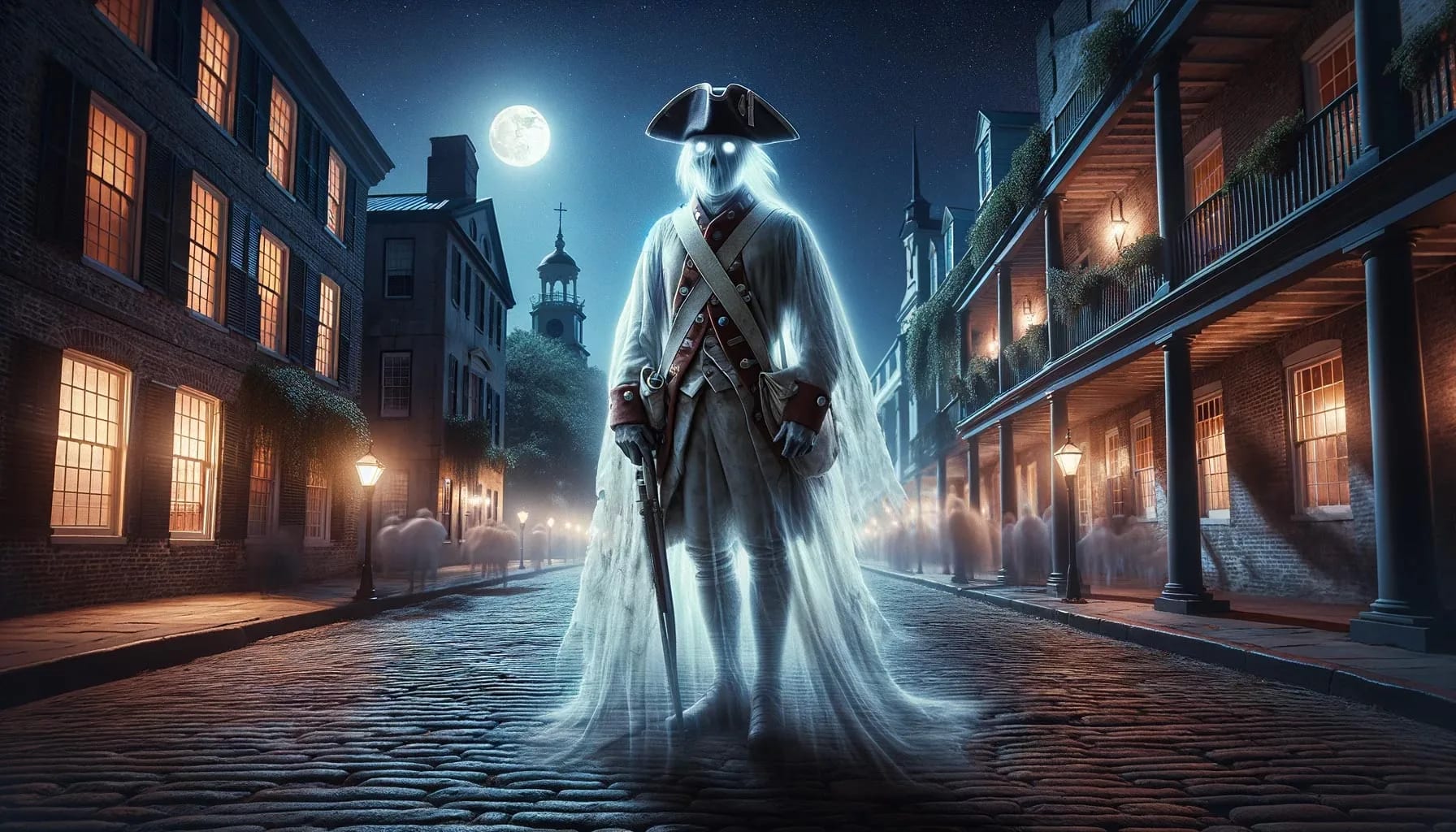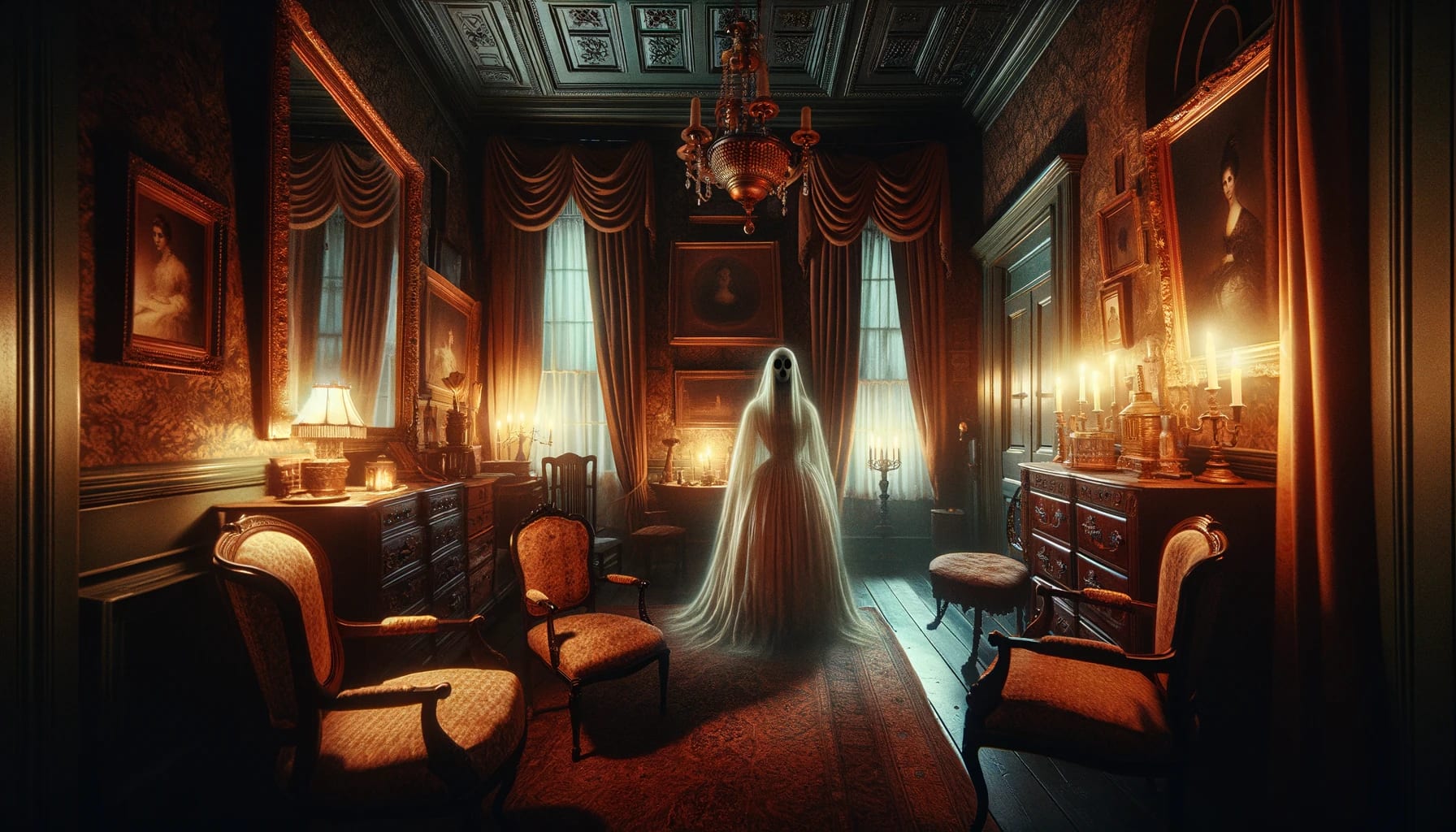2 Murray Blvd, Charleston, South Carolina, 29401
If Charleston, South Carolina, is known for the slogan "where history lives," then it's pretty safe to say that Battery Park and White Point Garden should be known as, "the place where pirates are hanged."
Today, both Battery Park and White Point Garden are a beautiful escape from the humdrum of everyday life. Fountains dot the scenic landscape and there is no shortage of interesting historical artifacts placed throughout the park. Artifacts like Civil War columbiads (large cannons), turn-of-the-century bandstands and countless of monuments raised in honor of important Charleston figures.
And yet, though Battery Park and White Point Garden (hereafter just called White Point Garden for convenience's sake) remain a favorite spot for Charlestonians and tourists alike, this park's past is not for the faint of heart.
Executions, gunfire and Civil War battles are all part of the park's biographical makeup, and it is for this reason that White Point Garden is considered one of the most haunted places in South Carolina's antebellum city of Charleston.
Should you venture out to the park in the dead of night, it's probably best if you don't go alone . . . for while beauty decorates the park during the day, at night is when the spirits come out to play.
The History of White Point Garden
Picking out White Point
In 1670, 93 passengers aboard the Carolina sailed into what is now known as Charleston Harbor. Thanks to the ship's captain, who had joined an earlier expedition to Charles Towne, he knew exactly where to direct the ship.
Up the mighty river Ashley, named after one of the colony's Lord Proprietors, Lord Anthony Ashley Cooper, and to the sharp-pointed peninsula the captain steered the ship. Originally, the indigenous population had called the river "Kiawah" (a name now given to a barrier island outside of the city). The Spanish had called it "San Jorge."
By the era of the English colonists, Ashley was the name for the river, and "Oyster Point" or "White Point" for the jutting peninsula itself. White Point accurately described the rocky land, since sun-bleached oyster shells littered the soil.
The colony's first governor, Colonel William Sayle, deemed that the land opposite the peninsula was the perfect place for granting land to the town's first settlers. Sayle confessed to Lord Ashley Cooper in a written letter, "It is as it were a Key to open and shut[t] this settlement into safety or danger." He immediately began granting citizens land, but by 1679, realized that White Point (or Oyster Point) was more suited for building a town.
Hurricanes, Wars and Gunshots - Oh, My!
For almost the first century of colonization, White Point Garden remained a peninsula of shanties and shacks and modest homes. On September 14-15, 1752, however, a raging hurricane swept through Charleston Harbor. The Preservation Society of Charleston claimed that the force of the "strong winds began the evening of September 14, becoming more violent as the storm blew closer. Rain sluiced down steadily through the early morning, and a terrifying night gave way to a horrifying day."
The protecting seawalls of White Point had cracked, allowing water to rush through its broken walls into the city. By 11AM all of the ships floating in the harbor had found themselves washed up on the shores. Water levels rose so high that the townspeople panicked and climbed to the upper floors of their homes and, allegedly, contemplated taking their own lives to avoid the fate of drowning.
Records show that the hurricane greatly diminished the population of Charles Towne, and not two weeks later, another strong hurricane depleted their crop supply.
The eastern seawall of White Point was rebuilt with palmetto logs, which held strong until 1804 under the force of another hurricane. Then, the city people decided to use sturdy ballast stone instead.
For nearly a decade, White Garden became a highly sought out spot for outdoor performances--that is, until the War of 1812 when the British blockaded Charleston Harbor.
Fifteen large guns (cannons) were stationed around the perimeter of White Point, pointing at The Battery just across the way. For the length of the American Revolution and the War of 1812, Fort Wilkins occupied White Point (then, Oyster Point).
The War of 1812 was the least of White Point's worries, however. Citizens watched in horror as the first shots of the Civil War rang out at Ft. Sumter, just across the way from White Point Garden.
Gunfire ripped through the streets, destroying stately grand homes along the Battery. (Not to be downtrodden, homeowners simply built more outrageously big homes on the strip instead). With the threat of ongoing war hanging above their heads, the City of Charleston moved into action: they placed heavy fortifications around the city's limits, including along the outer banks of White Point, including columbiads, which were the largest-sized cannons in use at the time.
Today, a few of those columbiads remain at White Point, though the War Between the States has been over for over a century.
Relaxing at White Point Garden: Bathhouses and Concerts
From the very beginning, White Point has been a location that alternates between the deadly (war) and the tranquil (leisure).
Between the years 1840 and 1881, a public bathing house stood at the end of King Street. Built by James English, William Patton and Henry L. Pinckney for approximately $25,000, the bath house was a favorite spot for Charlestonians.
The cake and ice cream parlor on the top floor only added to its allure. Years spent enjoying its existence came to an end in the 1880s, when hurricane after hurricane ripped through Charleston Harbor. Although the City restored it each time, by 1881, the bath house finally shut its door for good. The waterway was filled in after that, and White Point officially became recognized as a "garden."
Still, the outdoor concerts carried on with much gusto. In 1906, Mrs. Martha W. Carrington had built a bandstand for her mother, Mrs. George W. Williams. White Point Garden became a place for joviality and fun--until 1978, when neighbors grew incensed with the constant racket coming from next door. Performances were then outlawed at the bandstand.
When the bandstand needed upkeep in 1985, which cost $30,000, some citizens proposed bringing back the outdoor concerts. The answer to that was "no," though weddings and certain special events are now allowed.
Pranksters and Military Memorabilia
There's no hiding the amount of military artifacts that can be found within White Point Garden, though no object takes the cake quite like the fake columbiad.
In the early 1900s, a British cannon from the Revolutionary War was discovered in Charleston. Some years later, in 1933, the City opted to return the cannon to White Point Garden, where it would have once sat in defense of the city.
Not to be outdone, a prankster waited in the shadows ready to make his mark. He hired a local foundry to construct a fake "Colonial-style" cannon, and then submerged it in water for about six months. By the time he pulled it back up, the feaux cannon had the same aesthetic look as the real Revolutionary War cannon found some thirty years earlier.
He then sold it to an antique dealer in Beaufort, South Carolina, where it was "discovered" for its outstanding condition and sent to Charleston. The City acquired the piece and placed it along the original cannon.
Luckily enough, the prankster had made a small error. As an anonymous historian put it, "the cannon fooled many people, but [...] because the foundry did not have the tools to fabricate an actual cannon, the foundry instead poured molten metal around a section of cast iron pipe even though cast iron pipe was not used in large cities until the 19th century."
At some point, the fake cannon was stolen and was never seen again.
A fitting end to a strange tale, don't you think?
The Ghosts of White Point Garden
Remember that White Point pirate slogan from the beginning of this article? Well, that's where the true ghost stories lie. While White Point's turbulent past of wars and hurricanes may have had a hand in making this park the haunted location that it is today, most attribute its haunting tales to the pirates who were executed here in the 18th century.
The Pirate: Blackbeard
Within thirty years of Charleston's official founding, piracy stamped its mark early on. As the 18th century's fourth largest port in America, Charleston was the perfect place for economic trade, both illegal and legal.
But, in late May of 1718, Charleston had a swashbuckling visitor it no doubt could have done without. Edward Teach, otherwise known as Blackbeard, blockaded the Charleston Harbor and took over the city. He quickly commandeered one of the port's ships, the Crowley, which was already filled to the brim with high-brow citizens to London.
Blackbeard subsequently sent a letter to the Royal Governor, claiming that he would execute every single person on the Crowley if he did not receive medical supplies. (Rumor has it that these "medical" supplies were actually for venereal diseases).
In a panic, the Royal Governor sent the required supplies. Blackbeard stayed true to his word--he didn't execute any of the prisoners, though he did take their valuables, money and, yes, their clothes.
(At least it was the summertime, eh?)
Less than two months later, the pirates blockaded the port once more.
The Other Pirate: Stede Bonnet
Today, Stede Bonnet's name is nowhere near as famous as Blackbeard's.
Born on the Caribbean island of Barbados to wealthy English parents, Stede Bonnet veered away from the traditional methods to "becoming a pirate." (Jack Sparrow, please show him the way).
Most commonly, pirates seized their ships on the ocean blue and turned the people on board either to Davy Jones under the sea or made them a part of the crew. Bonnet took the gentlemanly route, if such a thing exists. He personally funding the money for his ship, the Revenge, and even hired paid crewmembers.
But Bonnet had no experience in being a pirate, and was forced to hire someone to lead the crew. For a time, Bonnet and his men took on the Caribbean islands before sailing to the Bahamas, where he first met Blackbeard.
They joined forces and the rest, they say, is history.
The Pirates: Bonnet and Blackbeard take Charleston
Meanwhile, back in Charleston, Governor Robert Johnson of the Carolina colonies was begging the Lord Proprieters for help. The Lord Proprieters, naturally, ignored the plea and Johnson scrambled to find someone to step in.
That someone was William Rhett, a local merchant who'd banded together with other merchants of Charles Towne to fight back against the piracy problem.
In the waters closer to now-North Carolina, Rhett and his crew uncovered Stede Bonnet and his motley men of pirates in the Cape Fear River. (Could the river name be any more appropriate?)
Bonnet attempted to stand his ground. He combined the crewmembers from the other ships, so that they could sail as one unified force against William Rhett's three ships. (Perhaps the hope was that if they lost one ship, at least they did not lose them all).
Unfortunately, every single ship caught on the shoreline during low tide. But while Rhett was able to free his three sloops, Bonnet remained stuck. Hope was not all lost. When Rhett boarded Bonnet's ship, the pirate had a plan: to blow up the gun powder storage and send them all up to oblivion.
Bonnet's men were not with the plan. They threw up their hands and surrendered to Rhett and the merchant crew, and the whole lot of the pirates were subsequently chained up and shipped to Charles Towne.
Imprisoned and Executed
Thirty men, including Stede Bonnet, were promptly imprisoned at the Half-Moon Battery. (This Battery later came to be the Exchange and Provost Dungeon). But, thanks to Bonnet's prestigious heritage, he was separated from his men and jailed at the Provost Marshall.
Interesting tidbit: Bonnet staged an escape from his imprisonment. He wore a dress, disguised as a woman, but didn't make it past Sullivan's Island.
All of Bonnet's men were deemed guilty at trial and were summarily hanged at White Point. It's said that their bodies were left there to swing in the breeze, their faces growing bloated with heat, their skin slowly decaying as the hours turned the clock of time. When they were finally cut down, the bodies of the dead pirates were tossed into the marsh, which was later filled in with land so that homes could be built on top.
(Any wonder why Charleston is often called America's most haunted city?)
Unfortunately for Bonnet, his fate was no different than his men's. While he managed to convince the jury to push back his execution date seven times, the Judge finally held stern and ordered his hanging.
On December 10, 1718, Stede Bonnet was led up to the gallows at White Point. Author and historian Walter Fraser, Jr., wrote, "manacles and clutching a nosegay of wildflowers, was taken in a hurdle to the place execution near White Point where the once bold pirate appeared terrified and near collapse. The executioner dropped the noose over his head and around his neck and then Bonnet was 'swung off' the cart. He died an agonizing death of strangulation, the invention of the gallows that would break the victim's neck being years away."
A few days later, Bonnet's body was untied from the gallows and tossed into the marshes along with the bodies of his men. There they lay, a symbol of the popularity of piracy in the 18th century.
The swarming maggots and the feasting animals on their bodies were a sight that could not later be unseen.
The Spirits of White Point Garden
For five weeks in 1718, 49 pirates met their end at White Point and it's said that their souls continue to haunt the park and the nearby Battery Park to this day.
Visitors have witnessed anonymous faces peering back at them from within the tree, and a number of reports have surfaced about a manifestation of an apparition hanging from the old oak trees.
Terrifying screams echo in the midnight air, and legend has it that when people stand near Water Street and glance down, they can still spot the faces of the executed pirates staring back at them from the water's surface.
Visiting White Point Garden
Pirates, ghostly legends and untold battles make White Point Garden and Battery Park an excellent place to visit while in Charleston. With an excellent view of the Ashley River and Charleston Harbor, White Point simply can't be beat.
But don't forget about the tragedies which occurred here, and the stains that have marred the land. For the faint of heart, we recommend skipping around the set of historic oak trees during the night time hours. A ghostly pirate still haunts the spot and seems to enjoy screaming at passersby.

The peaceful garden concealing centuries of executions

Where phantom gallows appear after dark



